Botanic Garden
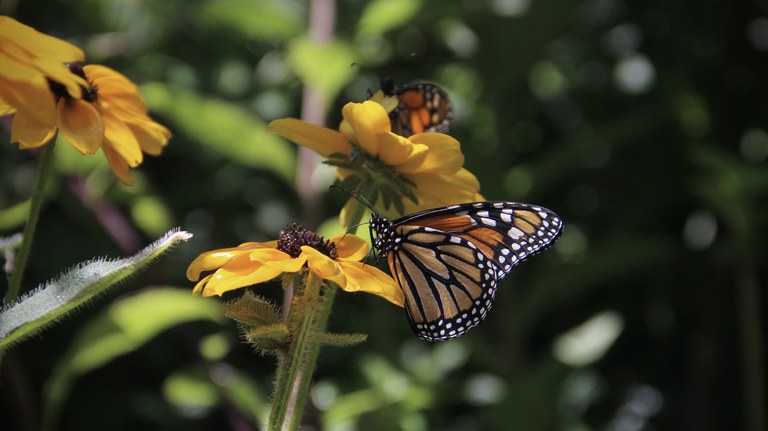
Opened in 1996, the Botanic Garden has grown to 32 acres of exhibits, and showcases plants from the American Southwest and around the world.
The Botanic Garden’s BUGarium is one of the most elaborate exhibits dedicated to bugs and arthropods in the country.
The Travel Channel cites ABQ BioPark Botanic Garden as one of the top 12 in the country!
Seasonal Update:
Learn more about featured seasonal plants!
Featured on 7/2/25: The name “ice plant” may seem strange for succulents commonly found in southern and eastern Africa and surrounding countries and islands. The name actually comes from the tiny fluid-filled cells that cover the skin of the leaves, which give the appearance of a layer of frozen dew. These cells retain water, help regulate excess salt, and may even provide defense against arthropod herbivores as a chemical and physical barrier. These low-growing plants blanket the ground in rich green foliage, and their daisy-like flowers bloom from June through October.
A dry, well-drained spot in full sun will make ice plants a heat tolerant addition to your front border, rock garden, containers, or naturalized garden spaces. In addition to the long flowering season, evergreen foliage sparkling with the namesake “ice” layer makes them a fascinating winter interest as well. These plants are perennial in many places, surviving winters where snow doesn’t sit too long and over-moisturize and when provided some protection from prolonged freezes. Some species even need to reach a certain minimum chill in order to flower the next season. With around 170 species in the genus Delosperma and many cultivars, there is a wide range of colors to complement your garden’s aesthetic!
Pictured: Delosperma 'Fire Spinner' in the container garden at the Heritage Farm
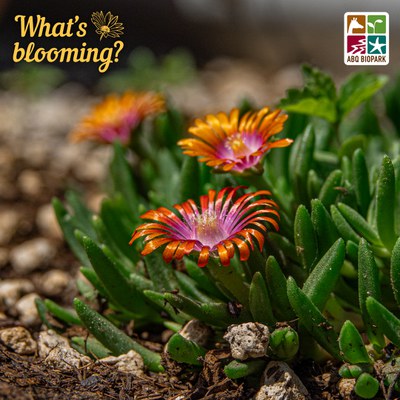
Featured on 6/18/25: It’s a Wonderland for pollinators…and for plant conservation! When you visit Poppy Hill at the Heritage Farm you’ll see a parade of pollinators dancing around as they feast, sometimes up to four bees on one flower or even different species sharing the same bloom! This space is home to two rare species that are a focus for the ABQ BioPark Botanic Garden’s plant conservation efforts: New Mexico beardtongue and the Sacramento prickly poppy. Although it’s not the only species of prickly poppy in the world, the unique Argemone pleiacantha ssp. pinnatisecta is only found in 10 canyons on the western slope of the Sacramento Mountains. This distinct subspecies was listed as federally endangered when populations were documented as decreasing dramatically, with climate change and habitat loss being especially dangerous for a species with such a small native range. The Botanic Garden became a state-wide seed source for the Sacramento prickly poppies even before becoming a Participating Institution with the national Center for Plant Conservation network, and seeds provided to the U.S. Forest Service have been grown for reintroduction into the wild!
The precious seeds of these endangered prickly poppies are protected, but there are about 32 species found in the Americas and Hawaii that could provide a similar look in your home garden. Prickly poppies of the Argemone genus are one of about 12 flowering genuses in the larger poppy family Papaveraceae. The more common southwestern prickly poppy from the parent species Argemone pleiacantha is also a New Mexico native that can thrive in our climate in full sun with excellent drainage, as their preferred habitat is dry woodlands, slopes of foothills and mountains, and rocky roadsides. Other desert-dwelling prickly poppies include the Arizona prickly poppy, Mexican prickly poppy, Mojave prickly poppy, and the Texas prickly poppy. These gorgeous perennials combine the beauty of more well-known poppy species with a spiky desert aesthetic to give your home garden a striking look!
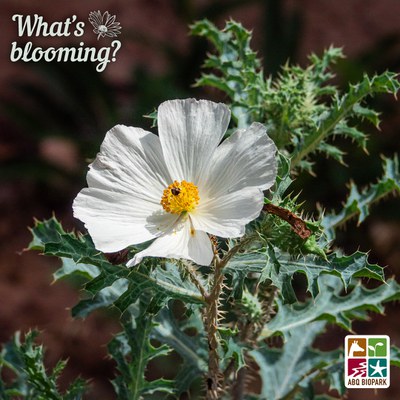
Featured on 6/11/25: Are these beautiful golden yellow flowers around the Botanic Garden right now a type of orchid, or perhaps a lily? Technically, it’s neither! Although commonly called a canna lily, the 10 species in the genus Canna are not true lilies (genus Lilium). The nickname likely caught on due to the similarity in appearance. These vibrant flowering plants are native to the American tropics, including all of South America, but have been easily cultivated in temperate climates in other parts of the world, even becoming naturalized in Europe, India, and Africa in the 1860s. The most common colors are warm shades ranging from reds and pinks to oranges and yellows, or any combination of those.
Growing around 30 to 48 inches tall, these bold flowers with their dramatic foliage will be a standout in your home garden for the eye as well as for pollinators. They thrive from the heat of summer through the first frost, but they will need consistent moisture in loose, well-drained rich or sandy soil. A thin layer of mulch can help retain moisture in the driest parts of the year, as well as protect the plants underground in winter. If your Canna is in a container, bring them indoors to a dry place that stays above 40º. They can move back outside once the temperatures are consistently above 50º at night. Plant them as part of a tropical garden, a backdrop border, a container accent, as your centerpiece, or even in the margins of a water garden submerged up to 1/3 of the total height. No matter where you place them, the canna lily adds height and striking color to your landscape design! Pictured: Canna ‘Gold Leopard’ in containers near the main pond
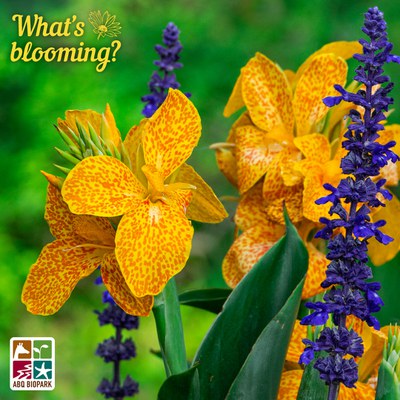
Featured on 5/28/25: Cacti in the genus Echinocereus are blooming at the Botanic Garden, and all over Albuquerque! There are about 70 species in total, found in sunny, rocky habitats throughout the southern United States and Mexico. You may call these small cylindrical cacti “hedgehog cactus”, a common name that is also used to refer to plants in the smaller genera Pediocactus and Echinopsis. Common names are often shared between species, sometimes originating before the taxonomic differences were further studied and described or because of local vernacular. Two similar-looking Echinocereus species, E. coccineus and E. triglochidiatus, may both be called claret cup cactus. Sometimes the difference is as subtle as scarlet hedgehog (E. coccineus) versus red-flowered hedgehog (E. triglochidiatus), which illustrates the importance of each species having an agreed-upon taxonomic name as well! No matter what you call them, these beautiful little cacti are iconic of the southwest, bringing a pop of color to our New Mexico landscape.
You can’t beat a native cactus species when designing a water-conscious garden here in Albuquerque. Not only are they already adapted to our climate, but they support local wildlife and pollinators who have already evolved alongside them as part of one ecosystem. Echinocereus cacti are a perfect choice for desert or rock gardens and even containers, as long as they have good drainage. They’ll be hardy in intense heat, direct sunlight, drought, and even cold temperatures near 0ºF as long as it’s dry. Too much moisture can rot the roots whether warm or cold, so make sure they are not in a low spot where rainwater or snow melt pools. The long-lasting and vibrant flowers and natural ability to thrive here make them a fantastic low-maintenance choice for your home!
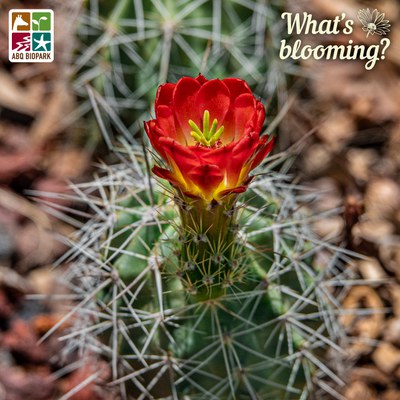
No results were found.
